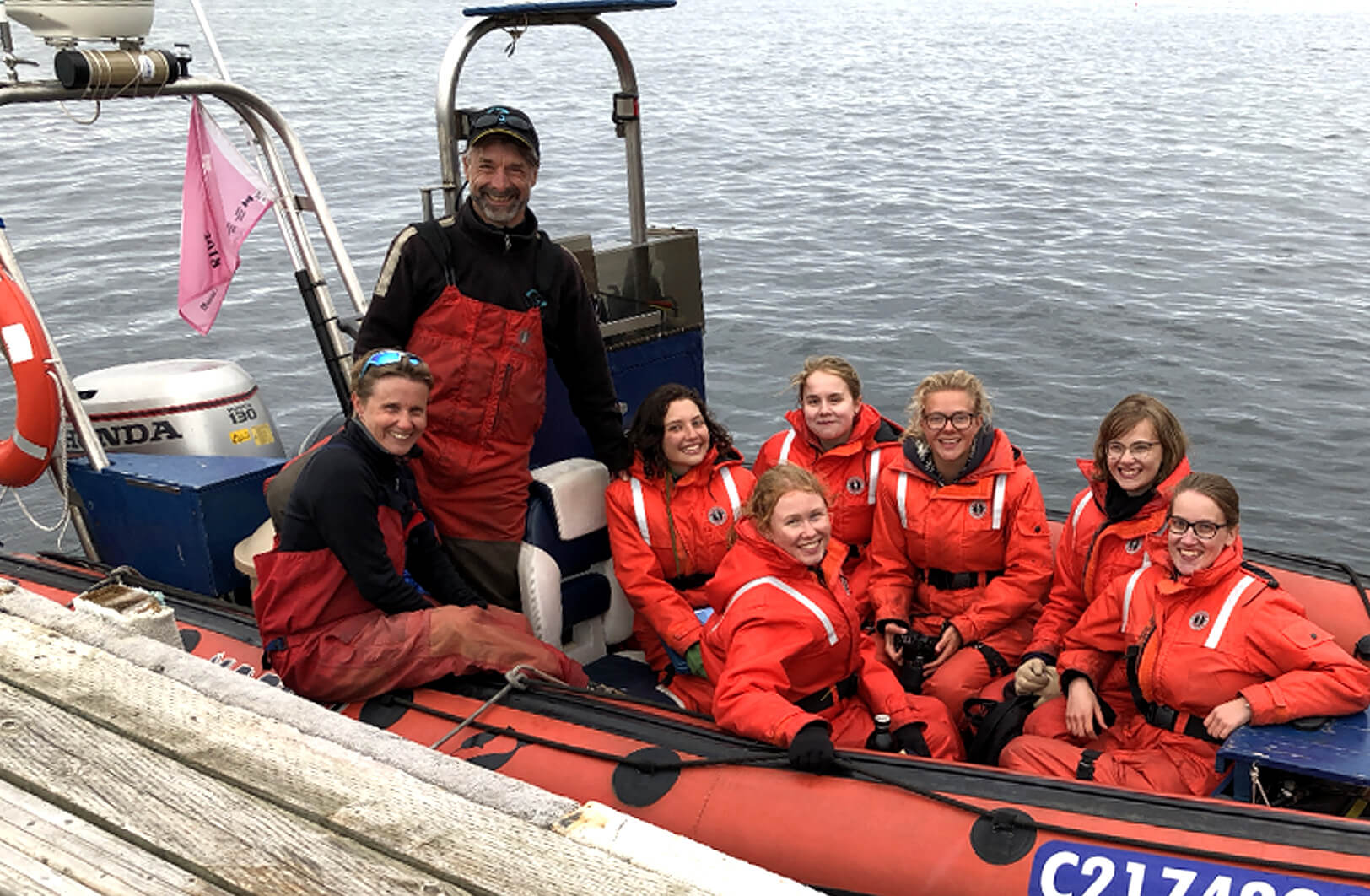A 23-foot orange Zodiac called Narval is used to approach minke whales. On board you will find the Mériscope crew, equipped with binoculars, cameras and a crossbow. Founded in 2001, this independent minke whale research group also offers marine biology internships to university students and the general public. Below is an overview of their work.
Identifying minke whales
In the lab, the team matches photos using the software program DARWIN (Digital Analysis and Recognition of Whale Images on a Network). The dorsal fins are plotted and compared by the software, which allows images to be sorted in a preliminary manner before they are validated by the human eye.
Contamination studies
Mériscope performs biopsies – a tiny sample of skin and fat – using a crossbow and a biopsy arrow specifically designed for cetaceans. Biopsies are used to study contamination and its effect on minke whales. Since the start of the season, the team has managed to perform four, a modest figure that reflects the complexity of the operation. Prior to the biopsy, the minke whale is tracked for 30 to 45 minutes. During this time, members ensure that the animal is at least 4 or 5 years old. Then, they check to make sure it does not appear in the photo-ID catalogue of biopsied individuals. In addition, each breathing sequence is noted, as are any behaviours observed. Then, the biopsy sample is taken, hopefully successfully. Another follow-up lasting 30 to 45 minutes is also carried out at a distance of 100-300 metres to record the breathing sequences and the changes of its behaviour. “Most minke whales return to their usual activities after 15 minutes, breathe at a similar rate as they did before the biopsy and resume the direction they were travelling,” says Dany Zbinden, who is hoping to take another fifteen or so biopsies to complete his study sample. Analysis of the biopsies is conducted by the laboratory of UQAM’s Jonathan Verreault.
Listening to their communication
With the collaboration of Swiss electronics engineer Urs Zünd, Dany Zbinden is developing a sound-recording buoy called “Mériscoute”, which will be tested next spring. Its wireless system will collect data in such a way that it does not need to be taken out of the water. The project aims to provide a portrait of noise pollution in the middle and surface layers of the Estuary.





